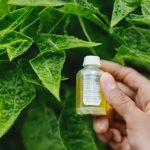
Welcome to our comprehensive guide on the potential impact of Visine in urine samples on drug test outcomes. In this article, we will explore whether the presence of Visine, an over-the-counter eye drop, can affect the accuracy and reliability of drug test results. We will delve into the effects of Visine on various drugs of abuse, as well as the prevalence of illicit drug abuse in the United States. Additionally, we will discuss common methods of cheating drug tests, including urine substitution, flushing, and adulteration.
When it comes to drug testing, accuracy is paramount. It is important to understand the potential impact of substances like Visine on test outcomes and the reliability of results. We have compiled detailed information on the effects of Visine, as well as its use as an adulterant in urine. By staying informed, we can ensure that drug test results are accurate, helping to maintain the integrity of drug testing processes.
Key Takeaways
- Adding Visine to drug-free urine specimens generally does not cause false-positive results for most drugs of abuse.
- Visine may affect the adhesion of 9-carboxy-THC, a metabolite of THC, to specimen containers in certain assays.
- The prevalence of illicit drug abuse in the United States is approximately 9.4% of the population, with marijuana being the most commonly abused drug.
- Methods of cheating a drug test include urine substitution, flushing, and adulteration with household chemicals or commercially available products.
- Household chemicals such as Visine can be used as urinary adulterants, potentially interfering with drug testing.
The Prevalence of Illicit Drug Abuse in the United States
In the United States, illicit drug abuse remains a significant concern. According to the 2013 National Survey on Drug Abuse and Health, approximately 9.4% of the population, or an estimated 24.6 million Americans aged 12 years and older, were current illicit drug users. This alarming statistic highlights the widespread nature of drug abuse within the country.
The most commonly abused illicit drug in the United States is marijuana, followed by cocaine, heroin, and hallucinogens. These substances pose serious health risks and can lead to addiction, health complications, and negative social consequences. The prevalence of drug abuse highlights the need for effective prevention and treatment strategies to address this public health issue.
Understanding the prevalence of illicit drug abuse in the United States is crucial for policymakers, healthcare professionals, and communities to develop targeted interventions and allocate resources effectively. By addressing the root causes and providing accessible support and treatment options, we can work towards reducing the impact of illicit drug abuse on individuals and society as a whole.
| Illicit Drug | Prevalence |
|---|---|
| Marijuana | Approximately X% |
| Cocaine | Approximately X% |
| Heroin | Approximately X% |
| Hallucinogens | Approximately X% |
Table: Prevalence of Illicit Drug Abuse in the United States
Ways of Cheating a Drug Test
We are well aware that individuals often employ various methods to cheat drug tests, hoping to avoid detection of illicit substances in their system. These methods typically involve substituting their urine with synthetic or drug-free urine, drinking products that claim to flush out drugs, or adding adulterants to the urine specimen after collection.
The most common approach is urine substitution, where individuals replace their own urine with synthetic or drug-free urine to deceive the testing process. Synthetic urine is designed to closely resemble real urine in terms of color, temperature, and chemical composition. However, it is important to note that specific tests are available to identify differences between synthetic urine and actual human urine. These tests can detect discrepancies in pH levels, creatinine concentration, and other parameters, making it difficult for cheaters to go undetected.
Another method is flushing, which involves consuming large amounts of fluid in an attempt to dilute the concentration of drugs and their metabolites in the urine. Detoxification agents and diuretics are often used in conjunction with this method to increase urine output. While this approach may lower drug concentrations below detectable levels, it can also result in false-negative results for certain drugs like marijuana and cocaine.
Adding adulterants to the urine specimen after collection is another common cheating method. Adulterants are substances that adulterate or tamper with the urine sample, aiming to interfere with the drug detection process. Household chemicals such as table salt, Drano, hand soap, vinegar, and even over-the-counter eye drops like Visine have been used as adulterants. However, it’s important to note that some adulterants can be detected through specimen integrity testing, which examines parameters like temperature, specific gravity, pH, and creatinine concentration. Laboratories employ various techniques to detect the presence of adulterants and ensure the accuracy of drug test results.
| Method | Description |
|---|---|
| Urine Substitution | Replacing urine with synthetic or drug-free urine to deceive the testing process. |
| Flushing | Consuming large amounts of fluid to dilute drug concentrations in urine. |
| Adulteration | Adding substances like household chemicals or eye drops to the urine specimen after collection. |
In conclusion, individuals often resort to cheating methods such as urine substitution, flushing, and adulteration to manipulate drug test results. While some of these methods may initially seem effective, laboratories have implemented measures to detect and prevent cheating. These measures include specific tests to identify synthetic urine, specimen integrity testing to detect the presence of adulterants, and vigilance in monitoring for signs of tampering. It is important for drug testing procedures to evolve alongside cheating methods, ensuring the accuracy and reliability of results.
Household Chemicals as Urinary Adulterants
When it comes to potentially altering the results of a drug test, individuals have been known to turn to household chemicals as urinary adulterants. These substances, readily available in most homes, can potentially interfere with the accuracy of drug test results. Some common household chemicals that have been used as urinary adulterants include table salt, Drano, hand soap, Visine eye drops, vinegar, and commercially available adulterants like “UrinAid”.
While certain urinary adulterants can be detected by specimen integrity testing, others, such as Visine eye drops, may not be easily detected using routine urine analysis. Specimen integrity parameters, including temperature, specific gravity, pH, and creatinine concentration, are often examined to identify potential adulteration attempts. However, there are effective spot tests and special urine dipsticks that can be utilized to detect the presence of specific urinary adulterants.
Table: Common Household Chemicals as Urinary Adulterants
| Chemical | Detection by Specimen Integrity Testing |
|---|---|
| Table salt | Yes |
| Drano | Yes |
| Hand soap | Yes |
| Visine eye drops | No |
| Vinegar | Yes |
| UrinAid | Yes |
It is crucial for laboratories conducting drug testing to be aware of the potential use of household chemicals as urinary adulterants. By implementing appropriate testing methods and being vigilant in detecting adulteration attempts, laboratories can ensure the accuracy and reliability of drug test results.
Flushing, Detoxification Agents, and Diuretics
When it comes to passing a drug test, many individuals turn to flushing and detoxification agents, as well as diuretics. These products are often marketed as effective methods to eliminate traces of drugs from the body and dilute urine samples below the detection threshold. Flushing and detoxification agents typically contain caffeine or other diuretics that increase urine output, while diuretics themselves promote increased urine production.
While these methods may seem promising, it is important to note that excessive fluid intake can result in false-negative results for marijuana and cocaine urine tests. This is because diluting the urine too much can lower the drug concentration below the level of detection. Additionally, relying solely on flushing and detoxification agents or diuretics may not be foolproof, as drug tests are becoming more advanced and can detect attempts to adulterate urine samples.
It is crucial for individuals to understand that there are potential health risks associated with these methods. Excessive fluid intake can lead to electrolyte imbalances and dehydration, which can have detrimental effects on the body. It is always best to consult with a healthcare professional or substance abuse counselor for guidance on passing a drug test and to explore safer alternatives.
| Method | Pros | Cons |
|---|---|---|
| Flushing and Detoxification Agents | – Increases urine output – Dilutes urine below detection thresholds | – Can result in false-negative results – Potential health risks |
| Diuretics | – Promotes increased urine production | – Can result in false-negative results – Potential health risks |
Table: Pros and Cons of Flushing, Detoxification Agents, and Diuretics for Passing Drug Tests
Effects of Adulterants on Drug Testing
When it comes to drug testing, the presence of adulterants can have significant effects on the accuracy and reliability of the results. Adulterants are substances that people use to try and cheat the tests and hide the presence of drugs in their system. These adulterants can interfere with the testing process and potentially lead to false-negative or false-positive results. It is crucial for laboratories to be aware of the effects of adulterants and to implement appropriate measures to detect and prevent their use.
Several adulterants have been identified that can interfere with drug testing. For example, Stealth, a product containing peroxidase and peroxide, can invalidate immunoassay screening and affect the confirmation of certain drugs through GC/MS analysis. Klear, which contains nitrite, can interfere with the confirmation of THC-COOH (a metabolite of marijuana) in GC/MS testing, although this interference can be eliminated with a bisulfite step. Clean ADD-IT-ive, which contains glutaraldehyde, can affect the immunoassay responses for various drugs. These are just a few examples of adulterants that can cause problems in drug testing.
Fortunately, there are ways to detect the presence of these adulterants. Special spot tests can be used to identify the presence of Stealth, Klear, Clean ADD-IT-ive, and other similar substances. These tests can help laboratories identify potential adulteration attempts and take appropriate action. By staying vigilant and employing effective testing methods, laboratories can uphold the accuracy and integrity of drug test results, ensuring the confidence of employers, organizations, and individuals relying on these tests.
Table: Examples of Adulterants and Their Effects
| Adulterant | Interference with Drug Testing |
|---|---|
| Stealth (peroxidase and peroxide) | Invalidates immunoassay screening, affects confirmation of certain drugs |
| Klear (nitrite) | Interferes with THC-COOH confirmation, eliminated with bisulfite step |
| Clean ADD-IT-ive (glutaraldehyde) | Affects immunoassay responses for various drugs |
By understanding the effects of adulterants and employing effective detection methods, laboratories can ensure the reliability of drug test results. This is crucial for maintaining the trust and confidence of employers, organizations, and individuals who rely on these tests for various purposes, including employment screening, legal proceedings, and rehabilitation programs. By staying ahead of adulteration attempts, we can uphold the integrity of drug testing and promote a safer and more accountable society.

Visine as an Adulterant in Urine
When it comes to drug testing, people have been known to resort to various methods to cheat the system. One such method involves using Visine, an over-the-counter eye drops product, as an adulterant in urine samples. The idea behind this tactic is that Visine could potentially interfere with the drug testing process, allowing individuals to pass the test undetected. However, it is important to understand the limitations and risks associated with this approach.
While routine urine analysis may not easily detect the presence of Visine, its impact on drug test results can vary depending on the specific substances being tested for. For instance, Visine has been found to increase the adhesion of 9-carboxy-THC, a metabolite of marijuana, to specimen containers. This means that Visine could potentially affect the detection of marijuana use in certain assays. However, it is worth noting that Visine did not cause false-positive results for most other drugs of abuse.
Despite the potential for Visine to interfere with drug testing, it is crucial to consider the risks associated with its use. Accidental ingestion of Visine can lead to neurological and cardiovascular complications, particularly in children. Therefore, intentionally using Visine as an adulterant in urine is not only unethical but also poses serious health risks. It is essential for laboratories to employ appropriate testing methods to detect adulteration attempts and ensure the accuracy and reliability of drug test results.
We must remain vigilant in our efforts to combat cheating in drug testing. By understanding the potential for substances like Visine to interfere with the process, we can develop more robust testing protocols and continue to uphold the integrity of drug testing procedures.

Adverse Effects of Visine
Tetrahydrozoline, the active ingredient in Visine, has both central and peripheral alpha-adrenergic properties. Although Visine is primarily used as a topical ophthalmic decongestant for relieving redness and swelling associated with allergic conjunctivitis, it can lead to adverse effects when accidentally ingested. These effects are particularly concerning for children, as they are more vulnerable to the potential neurological and cardiovascular complications that can arise from Visine consumption.
Accidental ingestion of Visine can cause a range of symptoms, including drowsiness, decreased body temperature, slow breathing, low blood pressure, and even seizures. In severe cases, it can lead to coma or cardiovascular collapse. It is crucial to store Visine and similar products out of the reach of children to prevent any potential harm.
We must exercise caution and prioritize safety when it comes to the use and storage of Visine, as well as other medications. Preventing accidental ingestion of Visine and promptly seeking medical attention in case of ingestion can help mitigate the risk of adverse effects and ensure the well-being of individuals, especially children.
Medicinal Uses of Tetrahydrozoline
Tetrahydrozoline, the active ingredient in Visine, is a topical ophthalmic decongestant with central and peripheral alpha-adrenergic properties. It is commonly used for the temporary relief of redness and swelling associated with allergic conjunctivitis. When applied to the eyes, tetrahydrozoline works by constricting the blood vessels, reducing inflammation, and alleviating symptoms such as itchiness and irritation. This makes it an effective over-the-counter remedy for individuals experiencing eye discomfort due to allergies.
In addition to its use in treating allergic conjunctivitis, tetrahydrozoline may also be utilized for other medical purposes. Studies have shown that it can be beneficial in reducing eye redness caused by minor irritations, such as exposure to smoke or wind. Moreover, tetrahydrozoline has been found to help alleviate eye fatigue and strain, providing relief to those who spend long hours working on computers or engaging in activities that require intense visual concentration.
It is important to note that tetrahydrozoline should only be used as directed and for the specific conditions it is intended to treat. Any usage beyond the recommended dosage or for prolonged periods may lead to adverse effects. If symptoms persist or worsen, it is advisable to consult a healthcare professional for further evaluation and guidance.
With its proven efficacy in addressing eye redness and swelling, tetrahydrozoline continues to be a trusted component of many individuals’ eye care routines. However, it is always recommended to consult a healthcare provider before starting any new medication or treatment, especially if there are pre-existing medical conditions or ongoing medications that may interact with tetrahydrozoline.
Table: Medicinal Uses of Tetrahydrozoline
| Condition | Medicinal Use |
|---|---|
| Allergic conjunctivitis | Temporary relief of redness and swelling |
| Eye irritations | Reduction of eye redness caused by minor irritations |
| Eye fatigue and strain | Alleviation of eye fatigue and strain |

Summary of Urine Adulterants and Effects
In the realm of drug testing, urine adulteration is a real concern. Individuals may attempt to tamper with urine samples by adding various substances or employing different techniques to alter the results. Understanding the effects of these adulterants is crucial for accurate and reliable drug testing. Let’s explore some common urine adulterants and their potential effects.
Table 1: Effects of Urine Adulterants on Drug Testing
| Urine Adulterant | Effects |
|---|---|
| Household Chemicals | May interfere with drug detection. Some chemicals can be detected by specimen integrity testing. |
| Flushing Agents | Can dilute drug concentrations below detection thresholds, leading to potential false-negative results for certain drugs. |
| Visine Eye Drops | May increase the adhesion of specific drug metabolites to specimen containers, potentially affecting test results. |
Household chemicals such as table salt, Drano, and vinegar have been used as urine adulterants. While some can be detected through specimen integrity testing, others like Visine eye drops pose a challenge for detection. Additionally, flushing agents and detoxification products containing diuretics aim to dilute urine, but they can also lead to false-negative results for certain drugs, such as marijuana and cocaine. It is important for laboratories to be vigilant in screening for these adulterants and implementing appropriate countermeasures.
By understanding the effects of urine adulterants, we can develop strategies to detect and prevent tampering, ensuring the accuracy and reliability of drug test results. Through proper testing procedures and comprehensive analysis, we can maintain the integrity of drug testing and ensure its effectiveness in various settings.

It is important to note that this summary serves as a general overview, and specific testing protocols may vary. Laboratory professionals and drug testing experts play a critical role in staying informed about new adulteration techniques and continuously improving testing methodologies to adapt to evolving challenges in the field of drug testing.
Conclusion
In conclusion, the presence of adulterants like Visine in urine samples can potentially impact drug test outcomes for specific drugs, such as 9-carboxy-THC, in certain assays. However, for the majority of drugs of abuse, Visine does not have a significant effect. It is crucial for laboratories to remain vigilant in detecting adulteration attempts and employ appropriate testing methods to ensure the accuracy and reliability of drug test results.
While Visine may not be easily detectable through routine urine analysis, it does have the ability to affect the adhesion of certain drug metabolites to specimen containers. Therefore, it is important to consider the potential impact of Visine when interpreting drug test results.
Overall, thorough understanding of the effects of adulterants, like Visine, on drug testing is essential in order to detect and prevent any potential manipulation of urine samples. By staying informed and implementing proper testing protocols, we can ensure the integrity of drug test results and maintain a fair and accurate assessment of drug use.
FAQ
Can adding Visine to urine specimens cause false-positive drug test results?
Adding Visine to drug-free urine specimens did not cause false-positive results for most drugs of abuse, except for 9-carboxy-THC in certain assays.
Does Visine have a detectable effect on routine urine analysis or the activity of certain drug conjugates used in assays?
Visine does not have a detectable effect on routine urine analysis or the activity of the glucose-6-phosphate dehydrogenase-drug conjugate used in certain assays.
Does Visine increase the adhesion of drug metabolites to specimen containers?
Yes, Visine does increase the adhesion of 9-carboxy-THC to the specimen containers.
Can Visine affect drug test results for other drugs of abuse?
Overall, while Visine can potentially affect drug test results for 9-carboxy-THC in certain assays, it does not have a significant impact on other drugs of abuse.
What percentage of the U.S. population are current illicit drug users?
According to the 2013 National Survey on Drug Abuse and Health, an estimated 9.4% of the U.S. population, or approximately 24.6 million Americans aged 12 years and older, were current illicit drug users.
What are the most commonly abused illicit drugs in the United States?
Marijuana is the most commonly abused illicit drug in the United States, followed by cocaine, heroin, and hallucinogens.
What are some common methods people use to cheat drug tests?
People commonly try to cheat drug tests by substituting their urine with synthetic or drug-free urine, drinking products that flush out drugs, or adding adulterants to the urine specimen after collection.
What household chemicals have been used as urinary adulterants?
Household chemicals such as table salt, Drano, hand soap, Visine eye drops, vinegar, and commercially available adulterants like “UrinAid” have been used as urinary adulterants.
How do flushing and detoxification agents work to cheat drug tests?
Flushing and detoxification agents aim to dilute urine to lower drug concentrations and increase urine output, thus potentially lowering the concentration of drugs and their metabolites below detection thresholds.
Do flushing and detoxification agents guarantee passing a drug test?
No, flushing and detoxification agents are not foolproof and can result in false-negative results for marijuana and cocaine urine tests. They also carry potential health risks.
What effects can adulterants have on drug testing?
Adulterants like Stealth, Klear, Clean ADD-IT-ive, and Urine Luck can interfere with drug testing by invalidating screening tests or affecting the confirmation of certain drugs.
Is Visine commonly used as an adulterant in urine?
Visine, an over-the-counter tetrahydrozoline topical ophthalmic decongestant, has been used as an adulterant in urine to potentially interfere with drug testing.
What are the adverse effects of Visine?
Accidental ingestion of Visine can cause neurological and cardiovascular complications, especially in children. It is important to store Visine and similar products out of the reach of children.
What are the medicinal uses of tetrahydrozoline?
Tetrahydrozoline, the active ingredient in Visine, is a topical ophthalmic decongestant used for the temporary relief of redness and swelling associated with allergic conjunctivitis.
How can urine adulteration be detected?
Specimen integrity testing parameters like temperature, specific gravity, pH, and creatinine concentration can be used to detect certain adulterants. Special spot tests and urine dipsticks can also be used.
What is the summary of urine adulterants and their effects on drug testing?
Household chemicals like table salt, Drano, hand soap, Visine eye drops, vinegar, and commercially available adulterants can be used to adulterate urine. Their effects vary depending on the drug and the testing technique.
















